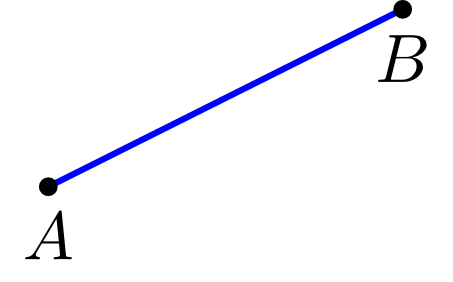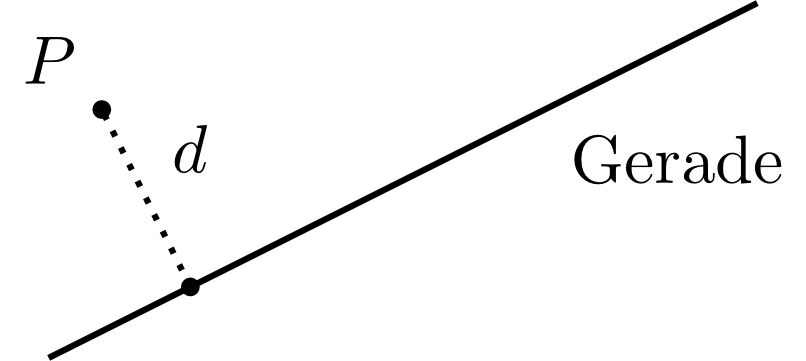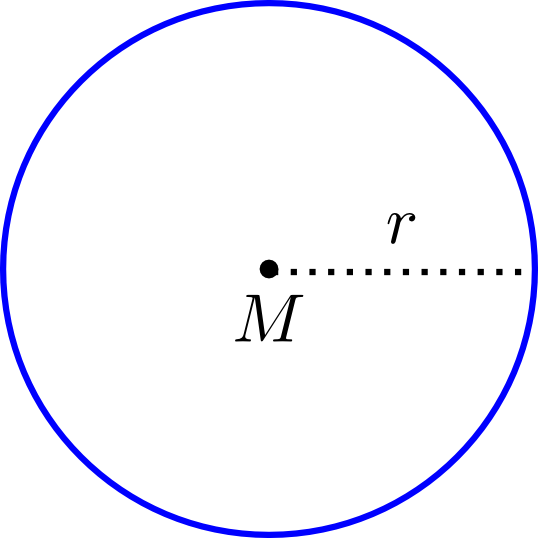Chapter 5 Geometry
Section 5.1 Elements of Plane Geometry5.1.2 Points and Lines
In geometry, a place or a position in a plane is idealised to the most basic object, namely a point. A single point itself cannot be characterised any further.
For several points, relations between these points can be considered in different ways - and points can be used to define new objects such as line segments and lines (see figure below). Mathematically, these objects are sets of points.
First, we consider a line segment and the distance between points. To do this, we need a comparison tool for measuring distance. In mathematics, this tool is a comparative length called the unit length. For applications, appropriate length units such as metres or centimetres are chosen, depending on the task in hand.
A ray of light emitted by a distant star or by the sun is an appropriate notion of a ray starting at the initial point and proceeding through a second point indefinitely. A ray is also called a half-line.
Continuing the path of a line segment on both ends indefinitely results in a line.
Considering, beside and , an additional point , we can ask for the distance of the point from the line , which is defined as the shortest path between and one of the points of the line .
Given three points , , and in the plane, the lines and can be defined.
The two lines have the point in common. If the point is also on the line , then and denote one and the same line. If the point does not belong to the line , the line is different from the line . Then, the two lines have only the point in common. The point is called an intersection point.
If any two lines and do not have any points in common, the smallest distance between points on and , respectively, is called the distance between the lines and . Hence, and do not have any point in common if they have a distance larger than . Two lines are called parallel if every point on one of the two lines has the same distance from the other line.
A single line can be described by the distance of two points and as well: The set of all points with the same distance from two points and is a line.
In geometry, it is a typical approach to define new objects by means of certain properties such as the distance. In this way, a circle can also be described very easily.
 Onlinebrückenkurs Mathematik
Onlinebrückenkurs Mathematik




